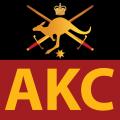A note from The Cove Team: This article was published in Smart Soldier 65, August 21. You can access the full edition on the DPN in the Army Lessons page. (Tip: Search for Army Lessons and select the Army Lessons search option (second or third option)).
Formed on 01 July 1981, NORFORCE (North-West Mobile Force) has been operating from Western Australia's Kimberley region and across the Northern Territory to the Queensland border as an infantry regiment of Indigenous Army Reservists. The regiment operates as a surveillance and reconnaissance unit within remote areas of Northern Australia and is one of three Regional Force Surveillance Units (RFSUs) along with 51st Battalion Far North Queensland Regiment (51 FNQR) and the Pilbara Regiment.
To commemorate the 40-year anniversary of NORFORCE in July 2021, we reflect on the valuable contributions of First Nations Australians in the Australian Army and the importance of cultural awareness within our organisation.
The role of RFSUs is to engage with local Indigenous communities and provide part time employment opportunities for local Indigenous people, including young persons who are inspired to become role models within their community. In addition to patrolling our northern borders to detect foreign threats, soldiers also contend with crocodiles, snakes and venomous spiders as part of their patrols and survival training.
First Nations Peoples
In recent years, the terms 'First Nations Peoples' or ‘First Nations Australians’ have emerged as a way of recognising Aboriginal and Torres Strait Islander people (AIATSIS, 2021). Current research indicates that First Nations Peoples have lived on this continent for upwards of 60,000 years and there are many different groups around Australia which have their own culture, language, traditions and beliefs.
Contributions of First Nations Peoples in the Australian Army
The incredible contribution of NORFORCE soldiers in patrolling the Top End region is attributed to their extensive knowledge of the region and its geographical challenges and their cultural connection to land. Their patrolling territory is larger than some European countries and requires a high degree of expertise in bushcraft and survival skills.
Indigenous Australian soldiers are experienced in local terrain and the challenges of managing extreme weather conditions, therefore, soldiers conduct the majority of activities during the night to remain undetected and to avoid daytime temperatures. Most NORFORCE activities are focused on patrolling for international drug smugglers and any other foreign incursions by land, sea or air.
What is cultural competence?
Cultural competence has been a term that is widely used to describe the ability to understand cultural differences and develop a positive attitude towards cultural diversity, including effective cross-cultural communication skills.
According to the University of Sydney’s Professor Juanita Sherwood, being culturally competent means that you value diversity within professional and social environments and respect that collaboration with different cultures provides an opportunity for innovation and knowledge sharing.
Cultural competence consists of the following three essential components (Browaeys & Price, 2008):
Awareness – understanding your own values and prejudices and how your view of the world may be different to others.
Respect – acknowledging the importance of cultural diversity and allowing another person’s culture to be celebrated without judgement.
Reconciling – finding ways to work together and collaborating for success. Using various skills and experiences to drive performance and work in synergy.
In a diverse organisation like the Australian Army, we have an opportunity to collaborate with a range of cultures, learn about other cultures and drive team performance by utilising the individual skills and experience of each team member, regardless of cultural background. Is your workplace culturally fit?
Cultural checklist for leaders
- Does your team consider cultural factors such as language, race, customs, family structure, sexual orientation and community dynamics when delivering training and activities?
- Does your team respect the culture, diversity and rights of First Nations Peoples, including children, youth and families?
- Does your team respect the religious commitments of different cultures?
- Does your team respect and respond to various culturally defined needs of peers and subordinates?
- Does your team interact without prejudice or judgement of other cultures?
- Do you support and educate your team in cultural acceptance?
- Do you provide opportunities for Welcome to Country or Acknowledgement of Country ceremonies?
- Am I driving a culture of acceptance and encouragement of diversity and inclusion?
Cultural competence is also the ability to recognise and celebrate the contributions of various cultures within the ADF. To commemorate the 40th anniversary of NORFORCE and the valuable contribution of Indigenous Soldiers, we remember our First Nations Peoples and their sacrifices.
Conclusion
This article provided a brief introduction to NORFORCE, Indigenous Australian soldiers and considerations for our culture in Army. For more information visit: https://www.army.gov.au/our-people/army-indigenous-community









